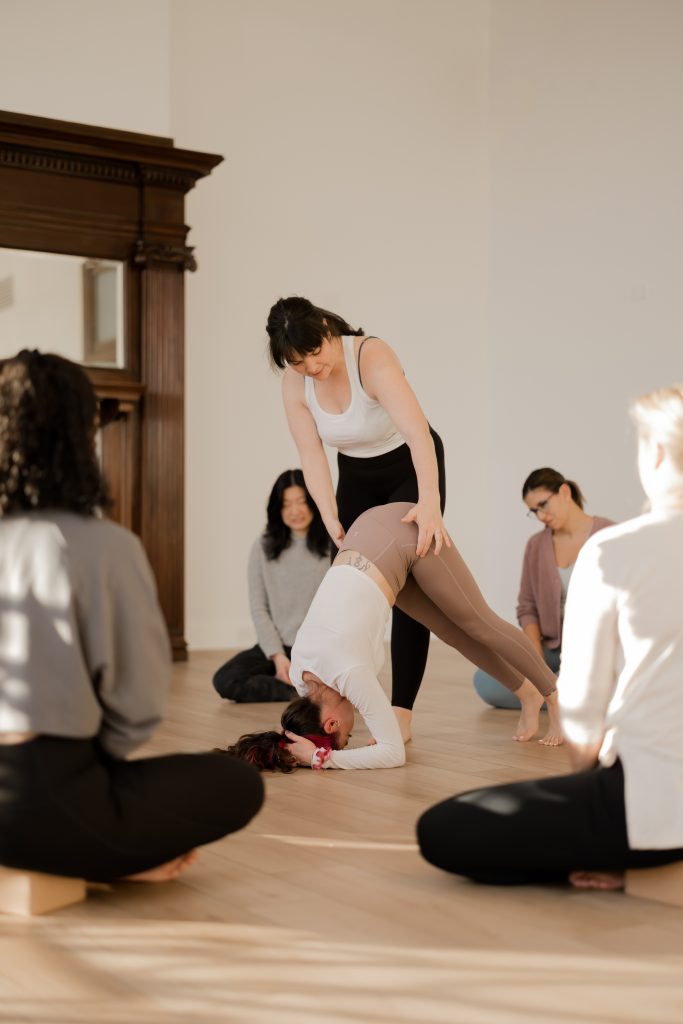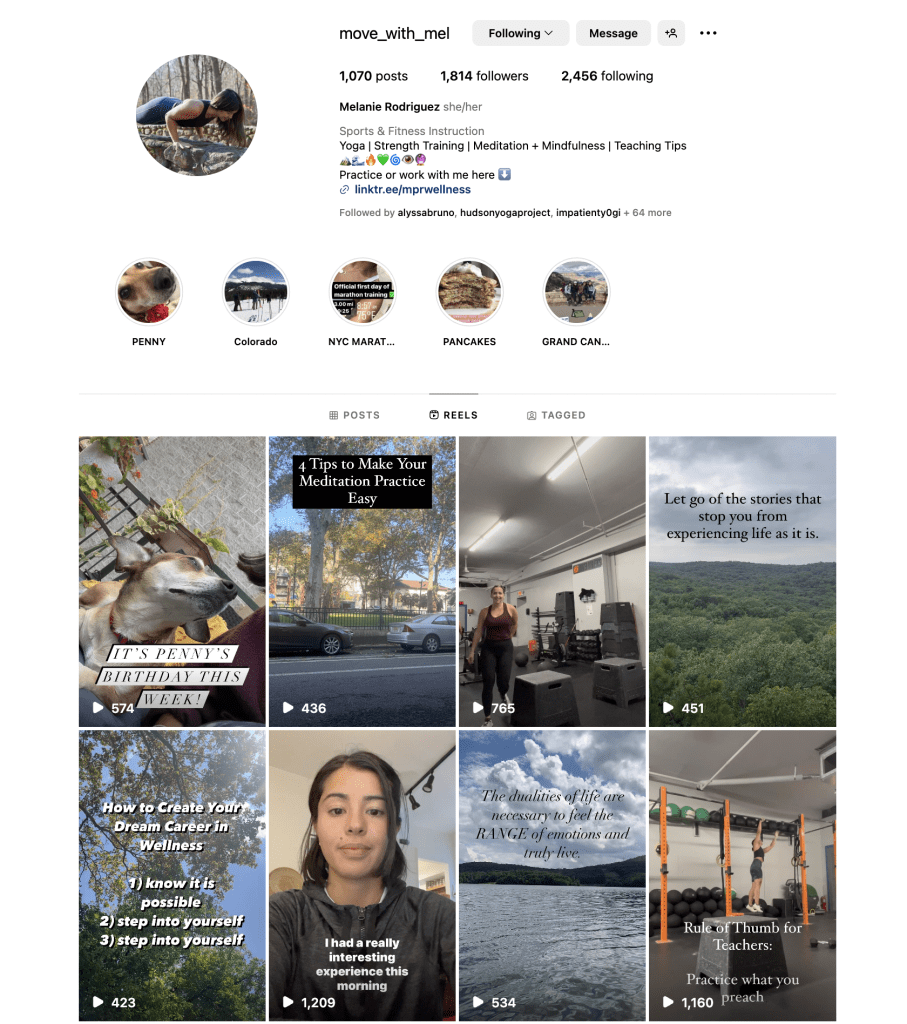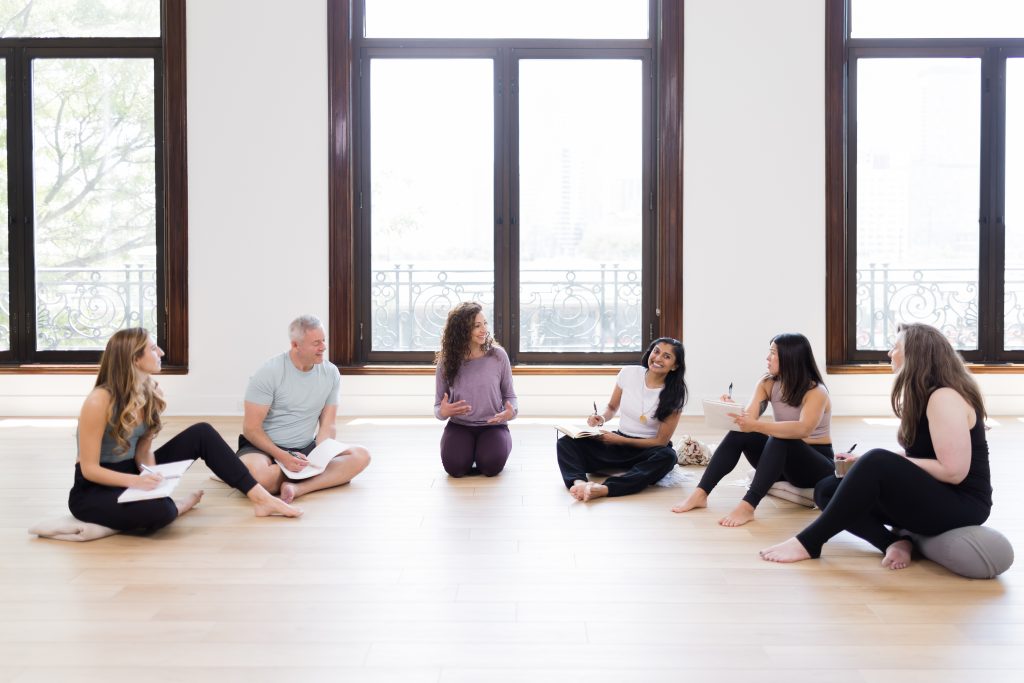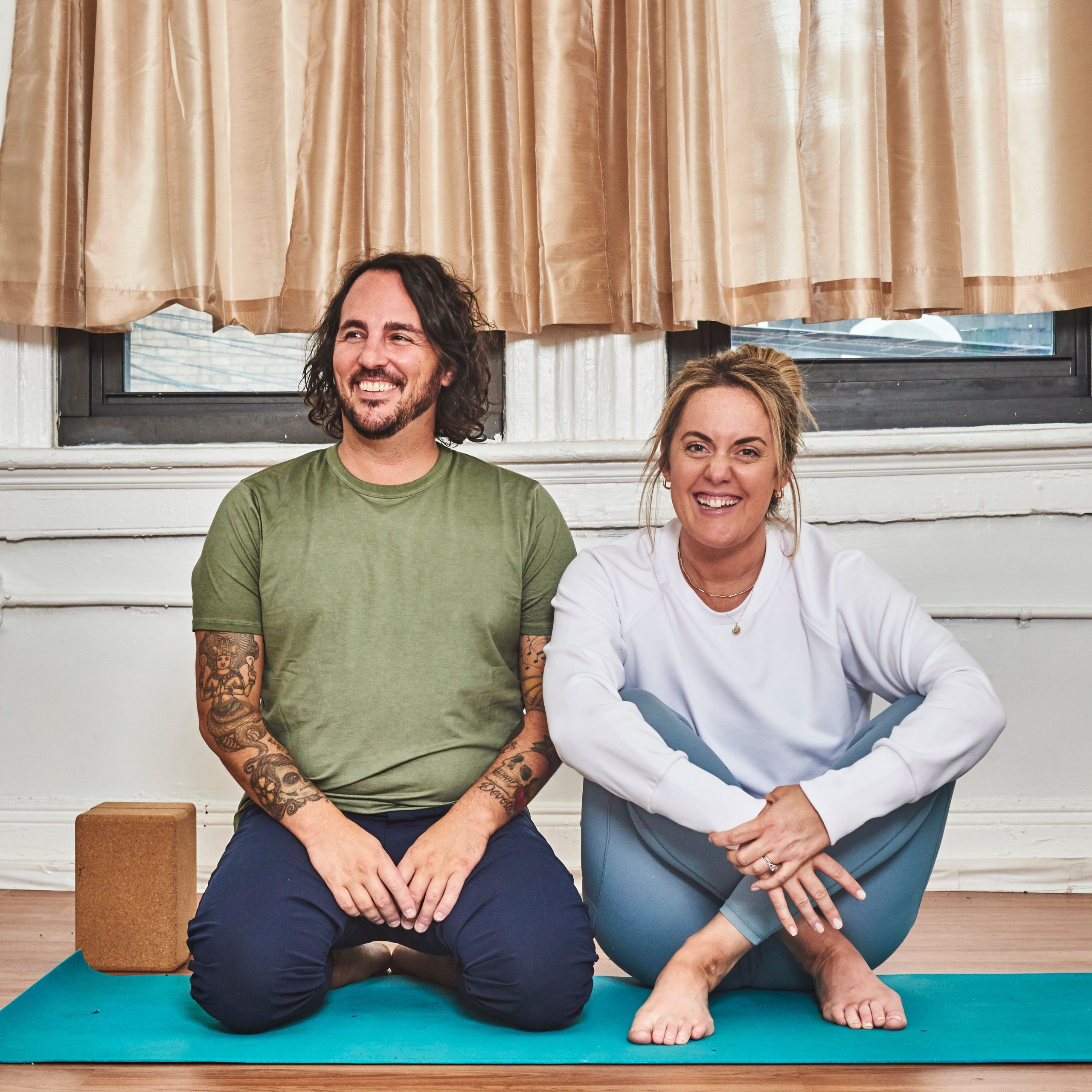
So you’ve finished your 200 Hour Yoga Teacher Training and now you’re ready to get out there and start teaching. But not only start teaching. You are looking to build a long-lasting career that will not only support you in all areas of your life from mental and emotional aspects to physical and financial.
Below are some ways in which you can build your career in terms of clients, the relationships you create, and your marketing/branding. You can read through all of these or you can skip to the sections that are most relevant for you at this time.
Building Your Clientele
In order to build clientele, you must put in the time to teach classes. This means subbing classes when you can (especially when you are a new teacher), teaching multiple classes throughout the week, building relationships with your clients, and sharing from an authentic space. It’s important to remember that people will not know you’re teaching unless you actually teach. You have to give people the opportunity to get to know you and your style. Even as an experienced yoga teacher, if I teach a class at a brand new studio where no one knows me, attendance may not be very high! This doesn’t mean I don’t have the skills to teach, or that people don’t like me, but it simply means that people do not know me or trust me.
There is a very special relationship between teacher and students, and whether or not it is consciously acknowledged, students/clients return to those teachers whom they trust and whose teaching styles resonate with them most. This is why preparation is so important. Your ability to put together a sound class, while remaining authentic is what will create long-lasting client relationships. Your students will grow with you, so long as they have the ability to connect with you. This is what will lead to clients following you from class to class, asking for privates, or taking your workshops/going on your retreats.
The Art of Subbing/Finding a Sub
Subbing is a big topic when it comes to teaching. As a Yoga Instructor, for the most part you have a pretty flexible schedule. However, once you are on the schedule you are scheduled to teach on the same days every week. Yoga teachers typically don’t get paid time off, or a certain amount of classes that they can sub out in a year. When you take on a class, it is assumed that you want to teach that class every week. Of course, things will come up. You get sick, life happens and this means that you are going to need a sub every once in a while.

Finding a reliable sub with someone whose style of teaching class is similar to yours will help your students feel comfortable.
The subbing protocol is different from studio to studio. Some studios have a texting thread, some studios use platforms such as Sub It Up or Instrukt, and other studios ask that you submit your sub requests through a manager. When taking on a class, it’s important to know what that studio’s subbing policy is. How would you go about an emergency? How many classes are you allowed to sub out in a month? Is it easy to sub out the class that you are being asked to take on? Everyone’s lives are different. You may travel a lot or you may experience situations where emergencies (or last minute events) are common. It’s important to take into account your life and how that gels with every aspect of the studio you are intending to teach at.
Building a Website
There comes a certain point in your career where you find it would be easier to have all your classes, events, and information in one place. You may be getting a lot of inquiries about how people can work with you privately, or perhaps you have people asking where and when you are teaching.
- Building a website does not have to be the first thing you do once you complete your first teacher training. In fact, I would not worry about creating a website until you’ve been teaching for a bit. When you are done with your teacher training and if you are intending to teach, I would recommend that is your main focus. But once you’ve gotten traction and maybe you’re planning retreats, special classes, and the like and you have a consistent following…building a website might be the next step.
- There are various sites you can use to build free websites on your own. Sites such as Squarespace, Wix, and ShowIt are some popular websites where you can create your website from start to finish without the help of a website or branding specialist. Creating a website on your own is definitely the most cost effective. These websites usually have different options for a monthly fee or an annual fee with the interface being rather user friendly. Of course, if you’re not so familiar with website development and/or branding, creating a website with all the bells and whistles may be a bit daunting. When I say “bells and whistles” I mean creating a button which connects to your email for prospective clients to connect with you, or linking different pages to one another, or linking a payment method to your website so clients can pay for sessions, events, or classes right from your page. If this feels at all overwhelming, the good news is that you can still create a website.
- You can always outsource help. This is more costly, however, you don’t have to go through the hassle or frustration of trying to figure everything out on your own, especially if you consider yourself to be less than tech-savvy. Word of mouth is a great way to find a website or brand developer (a website developer is someone who just does website creation while a brand developer is someone who helps you develop your marketing and branding along with website creation). A good resource to find someone to help you with your website is Fiverr. This website helps connect business owners with freelance workers (across all budgets) in aspects from website design to content creation to video production and more. So if there is something you are interested in outsourcing, check out this resource.
Mastering Social Media
When it comes to mastering social media, it might be beneficial for you to reflect on what your current relationship to social media is. How do you view social media? Do you see it as something that is beneficial? Social media is a wonderful tool for marketing and branding. It’s an instrumental tool in connecting with others (this means potential clients), sharing what you do (how will people know that you’re a coach, teacher, or trainer if you don’t share it?), and general self expression (storytelling, perspective sharing, and educational content).
Sometimes sharing things on social media can feel daunting. It might feel overwhelming or scary because when you put things out there for others to see, you are making yourself vulnerable. But vulnerability, I believe, and authenticity is one of the best ways to genuinely connect with others. When you share your heart in an authentic manner, others pick up on that even if it’s through a screen or phone.

Melanie’s Instagram grid to represent her active presence on social media as a yoga teacher.
Feeling called to begin mastering social media? Follow these tips below:
- Post frequently — Posting on social media is a habit like anything else. The more you do it and the more you “practice,” the easier it will become. If you’re looking to gain a lot of traction on social media, posting every day is important to drive traffic to your page. In addition, the more content you have, the more points people might have to connect with you on.
- Don’t second guess yourself — This is important. Sometimes we get in our heads way too much about what we’re sharing on social media. It can be paralyzing to the point that we curate what we say so much that it’s not authentic, or we don’t post at all. Remember, your viewpoints can change. What you share now does not necessarily have to hold true tomorrow or next year. Essentially, what you’re sharing is not set in stone even if it’s out there for other people to consume. Actually, I enjoy looking back on previous posts and seeing how I have grown in my own perspective, mindset, and values.
- Keep one account — Oftentimes when people are interested in using social media as a marketing/branding tool, the first instinct might be to create a new profile. One profile for personal use and one profile for business use. My tip here is to not do that. You already have followers on your personal page. People who already follow you are potential clients and are generally people who might be interested in learning from you! Why start from scratch when you already have a wonderful foundation? Another note is that who you are in your personal life should hopefully not be different from who you are as a teacher or yoga/wellness professional. Your personal experiences are what fuel your teachings, so why create separation? Let’s go for integration.
- Plan ahead of time — Planning what you are going to share ahead of time will help with creating consistency in your posting. When you plan ahead of time, you are no longer creating content on the spot nor are you under pressure to create something every single day. You can batch content, where you take a day to create multiple posts that you can share throughout the week. You can also preemptively take videos and photos that you know would be great for content. As an example, I love to snap 10-20s scenery videos that would be a great background for reels. This has made it extremely easy to create content that contains words, phrases, or quotes.
- Just do it — If you’re wondering when to start, stop thinking about it and just do it. You definitely have a photo or video in your camera reel that is appropriate to share on social media. It doesn’t have to be the most jaw-dropping content, nor does it have to be perfect, or does it have to be liked by hundreds of people. But as long as you feel inspired, put yourself out there and just do it. Share and see what happens. Our fear of judgment holds us back, but often I find that when we choose to be vulnerable we are met with love. Even if it’s only by a few people.
Developing Online Courses
Online courses are a great way to share a topic in depth that you feel passionate about and/or that you’ve mastered. This is similar to a workshop, except this is something that can live on forever and can be far-reaching beyond the studio you teach at. You can create an online course about anything. Of course, there has to be an interest in what you’re seeking to share. Within yoga, there are certain topics that masses of people like to consume such as ayurveda, asana (especially specific subsets of poses like arm balances or inversions), meditation & mindfulness, philosophy, sequencing, etc… and it’s not limited to these topics.
When developing an online course you have to consider the following:
✅ Is there interest?
- Like a workshop, you want to ensure that the topic you’re interested in sharing is something that people are interested to consume. Online courses are a ton of work. When you’re teaching live, you have the ability to work off the cuff and bounce off peoples’ energy. This is not the case when you’re filming. Filming usually requires you have a script, there’s typically more than one take, and if you’re doing something physical this means you’re most likely doing the physical practice as you film, which is another level of effort. So all in all, it’s important to try and ensure that what you’re creating and putting your time towards is ultimately something that people will be excited about.
✅ What is your intention behind the online course?
- Defining your intention behind an online course is important for you to know your WHY. Knowing your why will help you to share from an authentic space. Why is this topic important to you? Why have you felt so interested in this topic to the point that you feel you’ve mastered it? What is driving you in sharing this information? Connecting to your intention helps you to connect to your audience. It’s similar to social media, the more authentic you can be, the more others will be able to detect and receive that.
✅ How are you planning to progress your students through the course?
- When it comes to planning, you have to really think about how you are going to structure your course. You also have to share with your audience how you want them to progress through the course. Because you are not teaching in-person to your students, you can’t give them feedback in real-time. So you want to do your best in delivering the information in a scaffolding manner. This allows your students to consistently build upon previous knowledge to ultimately gain the skills or information that is intended for them throughout your course. It may not be perfect, but if you’re looking to create a successful course you have to think about setting your students up for success.
Online Workshops with YogaRenew
I jumped in on the opportunity to publish an online yoga course as soon as I could. It was important to me to be able to have a reach in the online community to extend my offerings, especially during unpredicted times. If your curious as to what an online yoga workshop looks like, check out some of my courses offered here at YogaRenew.
Building Trusting Relationships
Building trusting relationships is probably the best part of being a yoga/wellness professional. When you are able to meet with like-minded individuals who are interested in a similar journey, it is the most gratifying and self-affirming experience. Relationships to your students, other teachers, and studio owners/managers are all important to build and maintain.

There is always room to grow in when conversing and learning alongside fellow yoga teachers and students.
Relationships to Students
Your relationship to the students that take your class is paramount in building your clientele, maintaining steady income, and supporting your overall fulfillment of your job. You don’t have to be best friends with everyone who walks through the door to take your class, but getting to know peoples’ names and taking genuine interest in the students who repeatedly take your class will go a long way in setting yourself up to have a solid group of students.
There is something to be said about also maintaining a comfortable distance from your students. Within the context of the student-teacher relationship, it’s important to remember that while teaching you are at the front of the classroom. This means managing the class, setting boundaries, and also respecting other peoples’ boundaries and space.
Another point to remember here is that all of your students can leave at any given time. The students who take your class may move, they may find another teacher, and they may leave the studio. You can love your students as you would love anyone else in your life, and with that remembering that you have no ownership over the students who take your class.
Relationships to Other Teachers
Your relationship to other teachers is an important factor when it comes to building trusting relationships. Having friends who are yoga teachers, particularly close friends, is extremely helpful when it comes to finding a sub, leaning on someone for support, and creating a community where you really feel a part of something larger than yourself. There’s also the benefit of knowing and connecting with others who are walking a similar path to you with a similar mindset.
A bit earlier on in this blog post, we talked about the art of finding a sub and the overall importance of “subbing culture” at whatever studio you are interested to teach at. It isn’t that you must be best friends with all the other teachers on staff for you to find a sub for your classes, but having relationships with the other teachers on staff can certainly help. When your sub request goes up, if your friend sees it they may be more likely to help out. It could also be the case where you perhaps ask one another to sub should one be needed, making it that much easier to take time off. Of course, you don’t want to rely or assume that your friends will pick up your classes but having people on staff who you know have your back can certainly help.
Teaching class is like making a presentation. You are required to stand at the front of the room and not only talk for a full hour (or more), but lead people through movements in a safe and effective manner, hold space for others, and do your best to share authentically. Some classes will go better than others. Some classes, the energy will be off, or you might make a mistake. I have gone to my trusted friends who also teach yoga when this happens. Sometimes it’s a venting session, sometimes it’s asking for feedback. But to have others who are in the same arena and can relate has been helpful in staying confident while growing my career.
Relationships to Studio Owners/Managers
The relationship that you have with the studio owners or managers that you work for is important for your overall experience of where you teach! The owners/managers are really the people who set the vibe, rules, and overall expectations of the studio. Different people have different communication styles and different ways of handling conflict, amongst other things. It’s less about being friends with the owner/manager and more so about having a solid ground of respect for the owner/manager. If respect is a two-way street for both parties, communication becomes much easier. If you have an issue that you need to discuss, being able to speak about that in an open way makes everything feel a lot easier and safer.
The last point to touch on here was brought up earlier, and that is creating a community where you feel a part of something larger than yourself. When you create trusting relationships with students, teachers, and the studio owners/managers you are creating a wide web of community members for you to converse with and potentially create long-lasting relationships.
Join our mailing list for incredible weekly content!








